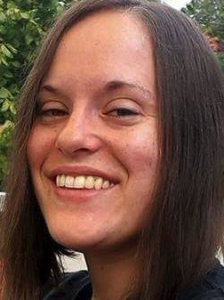Attract pollinators to your garden
Published 7:40 am Friday, May 4, 2018
Pollinators are animals that help with plant pollination, which is the process of the pollen of one plant being moved to another plant of the same species, resulting in the
production of fertile seeds and plant reproduction. Pollination is very dependent on the work of pollinators such as bees, butterflies, moths, hummingbirds and bats. Once a pollinator lands on a plant, the pollen attaches to its legs, mouth, or body and is transferred to the next plant on which it lands. Almost all flowering plants require pollination – according to the National Academy of Sciences, almost 75 percent of flowering plants rely on pollinators in order to produce seeds or fruit. A study by Cornell University calculated that crops pollinated by pollinator animals “contributed $29 billion to farm income in 2010.” Humans rely on pollinators just as much as crops and plants do.
Pollinators are keystone species, which are species upon which others depend. In addition to humans depending on pollinators, other animals in the ecosystem rely on them too. Animals, such as birds and black bears, eat the fruit that results from pollination. Pollinator species are a crucial part of the environment, so it is important to protect them, especially as pollinators are declining in number. According to the U.S. Department of Agriculture, “pollinator populations have suffered serious losses due to invasive pests and diseases, such as mites and viral and fungal pathogens, exposure to pesticides and other chemicals, loss of habitat, loss of species and genetic diversity, and changing climate.” Not all hope is lost, however, because there are steps we can take to help pollinators thrive.
One of the best ways to benefit pollinators is to select plant species that are native to your region. Not only do native plants provide the best sources of food for pollinators, but they require less watering and are more resistant to pests and diseases than non-native plants. Examples of native plants in Central Virginia that attract pollinators include: butterfly milkweed, spotted Joe Pye weed, goldenrod, great blue lobelia, black-eyed Susan, blue vervain, New York ironweed and narrowleaf mountain mint. When choosing native pollinator plants, select plants that are well-suited to your planting area – shade versus full-sun, well-drained soil versus wet soil, etc. To see some of these plants on display, visit the Piedmont Soil and Water Conservation District (SWCD) and view the “Bayscape” garden surrounding the office. For more information on native Virginia plants, visit the Virginia Native Plant Society website at http://vnps.org/ or the Virginia Department of Conservation and Recreation’s Natural Heritage website at http://www.dcr.virginia.gov/natural-heritage/nativeplants.
Although we may not find “messy” gardens attractive, pollinators love them. Small piles of branches attract butterflies and moths, and fallen plant material provides a home for nesting bees. According to the U.S. Forest Service, “Most of our native bee species (70 percent) nest underground so avoid using weed cloth or heavy mulch.” Consider the slogans, “Bee homey” and “Bee a little messy” when planning your garden to provide a habitat for pollinators.
When choosing native plants, select a variety of species with different bloom times so that your garden will have blooming flowers year-round. Not only will you be able to enjoy color in your garden throughout the year, but pollinators will have ample access to food sources from blooming plants.
Avoid the use of chemicals such as pesticides whenever possible as pesticide usage is one of the causes of pollinator decline. Planting a diverse mixture of native plants is a great way to reduce the risk of pests since most pests attack a specific species rather than a wide range of plants. Incorporating organic matter, such as compost, into the soil helps to encourage the growth of microorganisms that discourage soil-borne pests. If you determine that you do indeed have a pest problem, hand-removal and spraying with soapy water are alternatives to pesticide usage. If a pesticide must be used, choose one that is specific to the certain pest rather than a broad-range pesticide as broad-range varieties often kill beneficial insects that attack pests.
To encourage pollinators in your landscape, “back to the basics” is a good place to start—choosing native plants, leaving a bit of “mess” such as plant debris for pollinator habitat, and manually removing pests instead of using chemical pesticides. For more information, contact the Piedmont (SWCD) at (434) 392-3782 ext. 5 or your county’s Virginia Cooperative Extension Office.
Emily Gibbs is the Residential Conservation and Marketing Coordinator at Piedmont Soil & Water Conservation. You can contact her at (434) 392-3782 ext. 131 or visit www.piedmontswcd.org.



